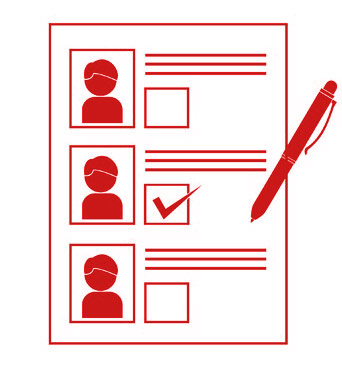Thank you for continuing to share these messages with your friends, if you are not already on our mailing list, please click here to be added to our list. You can also follow me on Facebook. The more people we can reach, the more we contribute to this growing movement. We share these posts on our blog, A Path Forward to November 3, 2020, every two weeks, which means there will be a total of 100 missives before the Presidential election of 2020, in which our country will select a whole new course.
By now you will have heard the arguments that the polls are narrowing, and that we should not be as sure of ourselves as we might have been a couple of weeks ago. Comfortingly, the Trump approval ratings are still awful. For all the talk about his loyal base, at least 20% of the people who voted for him (and maybe more) have deserted him. Even in the face of the Nunes-driven flurry, the employment gains of the Obama and now the Trump presidencies, if the fall Congressional elections were held today, we would win well more than the necessary 24 seats to take back the House.
But the election isn’t being held today, and the results of November 2016 are still fresh enough that we know that people will sometimes do things that we find incomprehensible. Given that what is at stake --- the future of the great democratic experiment --- is at risk, how can we not take our own personal political adventures to an all new level?
We are talking about each and every one of us here. There is no free pass related to “I don’t even know people who support the President” (You do!), and no free pass for “I am not happy with the organizing skill of Democrats” (Good for you!), and no free pass for “I find this all exhausting and I am so weary that I have to get on with my life and leave this aside for a bit” (But, we can’t!) and certainly, above all, absolutely no free pass for “I don’t know what I can do to support this effort.”
Because, we all do know that this is a major occupation for us this year. We know that, with all other Trump initiatives, the wholesale, cynical attacks on the FBI will be exposed in all of their tawdriness very soon. We know that Robert Mueller is out there methodically assembling evidence that will use Michael Flynn or Reince Priebus or Steve Bannon or Hope Hicks to expose Trump’s congenital aversion to truth. Obstruction of justice will be clear, since Trump contributes to those charges every week. Whether or not Donald Trump has a provable role in collusion between his campaign and the Russian government, all of this will not go well for him. Don’t despair in his tweets, eagerly await them. It is unlikely that he will ever escape the protection of his aides and lawyers to impeach himself, but he is so used to the lie that if he could, he would.
Because Mueller is out there, and very notably because Mueller is rightly being protected by Trey Gowdy and Lindsay Graham and Richard Burr and even the Senate Judiciary Chairman Charles Grassley, who is by no means a renegade, 2018 will be a good year for Democrats. To make it an even greater year, a few million people in the resistance must keep doing what they already are doing, but just a bit more of it, and just a little bit better.
The elements are simple. First, we put the right races in play, including at least a few that are longer shots but offer candidates who are irresistible. Second, we occupy ourselves with doing the right thing in those specific races and we do not allow ourselves to be distracted. Third, we attend to the underlying conditions under which these elections will be held. Who is going to be registered to vote? Whose vote might be suppressed? And most importantly, how can we maintain the enthusiasm and get out the vote mechanisms that will assure that we vote in the necessary numbers, like we did in Virginia in November of 2017? If each of us isn’t doing each of these three things, now is the time to start:
| 1) If You Haven’t Narrowed Your Field, Do it Now | |
 |
Perhaps you live in a Congressional District where there is an incumbent whose performance you like, but they are in a safe seat. You want them to be in the majority much more often, so you decide to focus your attention on one or more potentially close races in other districts. Which to choose? There have been a startling number of Republican retirements in swing districts, where incumbents were not looking forward to this election year. The Democratic Congressional Campaign Committee’s first list of targeted races lists 59 seats. The Daily Kos has identified as many as 80. There are all sorts of resources to help with figuring this out, as described in previous missives. With 6000 local groups, Indivisible is helpfully focused on every district. Swing Left, which drew some suspicions from political veterans at the outset, is an excellent source for identifying districts in play and understanding why those districts are targeted. They are entirely focused on taking back the House. The heavily data-driven Flippable is doing good work, including focusing on state legislative races. All these organizations have more spark right now than the Democratic Party itself, which is not entirely a bad thing, because it makes this a much larger and more spirited movement. Go beyond all this help and teach yourself to understand a race. If a Republican member of Congress has retired, is there a Republican heir apparent, or are conservative and “moderate” forces clashing? These disputes make a district more attractive for Democrats, because the loss for one faction in the Republican primary can dampen turnout in the general election. If there are four or five Democratic candidates in a swing district, start by understanding their views, their motivation for running, and their background. Check to see who is already well organized and is raising money early. If someone is way ahead on all of those fronts, that will be a sign that they are getting strong support from traditional Democratic constituencies. Several states have their primaries this spring. If there are four or more candidates, fewer than 30% of the votes can select the candidate. Remember that the total received in the Democratic primary of all the Democratic candidates is a huge issue. If a single Republican gets 48% and four Democrats split 52%, we are in play for November, as long as we remember to come back together. We will remember that, no? |
2) Be Strategic In How You Deploy Your Money |
|
 |
Your favorite Senator or Congressperson will ask you for a donation whether she or he needs it. Eventually if they decide they have surplus funds they can send it to the Democratic party, but that is too circuitous for your donation to count. The best way to give money to a candidate is to do it directly. You can donate through their campaign website. The best time to give money is now, as your favorite candidates are getting their grounding. Inventively, Swing Left has pioneered “district funds”, in which you can give money to an account in a swing district before the Democrats select their nominee. District funds will help candidates who deplete their resources in the primary to get a good head start on their general election campaign. Now there are two terrific additional ideas. First, Swing Left has created the opportunity for activists to have their own personal fundraising page to gather resources in a selected swing district. This allows you to personalize your activism, keep track of your success, and gather your friends around one candidate. Second, in case you are hankering to find special efforts to get millennials enthusiastic about this fall, Future Forum is a political action committee made up of 26 of the youngest Members of Congress that has already visited 30 cities. |
3) Remember Increased Voter Registration Works to Our Advantage |
|
| |
At this point, Rock the Vote is doing the best national work to increase the presently discouraging rate of registration and voting by those under 35. The range of their strategies is what most distinguishes them, including some corporate partnerships. New voters should get special emphasis nationwide. A great initiative would be evaluating your local four year college or community college to see what voter registration efforts are already planned, and to make certain campuses aren’t waiting until fall to get going on these matters. The Campus Voting Project has created a student voting registration guide for each state, with special attention to the way some states and localities discourage student registration. You can make certain this guide gets in the right hands, or even gather a circle of friends to take on student registration as a group project. |
The early work of campaigns is happening now. Every call, meeting, project, donation, and rally carries extra significance, because it is right now when momentum is being built for the fall. Let’s not wait until spring and find ourselves wishing in October that we had started earlier. Let’s treat every self-aggrandizing, truth-challenging tweet as a personal signal that this denigration of the Constitution has definitely got to stop.
David Harrison
Bainbridge Island, Washington
No comments:
Post a Comment